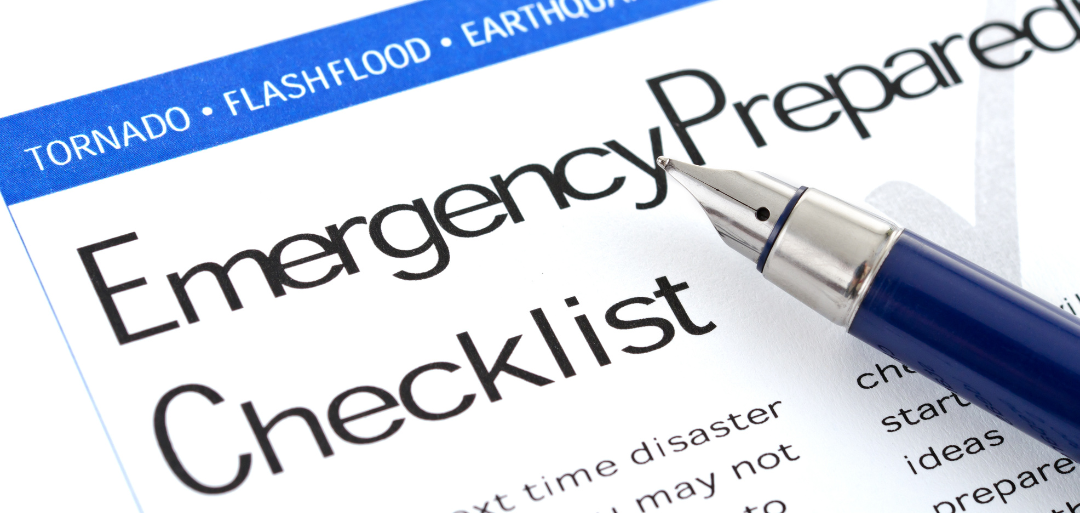Article | Damage Assessment, Claims and Relief Aid
Article | Damage Assessment, Claims and Relief Aid

INTRODUCTION
As communities recover from natural disasters, arts and cultural organizations face a unique set of challenges. These organizations often house the history, heart and soul of our communities, but can have difficulty accessing the types of support or immediate financial assistance provided to community infrastructure such as electricity, water, and housing.
The closure and casualties of gathering centers, small retail shops, performance venues, cultural heritage institutions, city courthouse archives, studio equipment and workshop spaces will have lasting detrimental effect to economies, community livability, community identity and mental health across the state.
There are several resources available to guide artists and organizations through damage assessment, claims and relief aid as they navigate rebuilding within their communities.
WHO CAN HELP MY ARTS BUSINESS?
Artists and arts organizations frequently identify funding support. What financial options exist for arts organizations and how can this support be accessed? Searching for funding, identifying eligibility, and gathering the necessary paperwork can be an overwhelming task for already budget-strapped organizations that are addressing immediate concerns such as documenting water damage and filing insurance claims. Eligibility requirements for funding or assistance can vary according to the source of the funding, non-profit status and even the type of arts or culture services your organization may provide. The following are key resources for providing additional information.
Federal Disaster Relief/FEMA
Federal disaster relief may require documentation of insurance claims and applications filed through the Small Business Administration1 before additional assistance is granted. Those federal funds are reimbursable up to a certain dollar amount per entity or household (which means that you might have to pay for things out of pocket, up front, to be reimbursed later). The window for applying for aid is also short – just 30 days from the disaster declaration for institutions (60 days for households), so seek out assistance for submitting your applications in a timely manner.
Artist entrepreneurs will need to apply for a SBA Disaster Loan2 before FEMA assistance can be granted, even if you expect you won’t qualify. If your area has been designated a federal disaster zone, you should always file for Federal Emergency Management Agency (FEMA)3 assistance, regardless of whether or not you feel like the extent of your damages is great enough to qualify. FEMA eligibility is not based on household or business income. If you do not get the reimbursement you feel is deserved, there is also a pathway for appealing FEMA awards.4
If Filing as an Individual Artist seek out the FEMA Individual Assistance (IA) Program.5
The deadline to apply is typically 60 days after a disaster declaration.
If Filing on behalf of an Arts Organization seek out the FEMA Public Assistance Program.6
The deadline to apply is usually 30 days after disaster declaration.
Document Everything As Soon As Possible –
Whether you are dealing with Federal relief or an insurance claim, once conditions are safe for assessment, documentation will be key. Take photographs and videos of damaged areas, equipment and lost work from multiple angles, including items that may seem unaffected. Mold/mildew can grow on fiber, paper and wooden objects within days if proper climate conditions aren’t able to be maintained, and other damage may be hidden from sight until debris is fully cleared away.
Keep Any and All Receipts
for supplies purchased during clean up and repair and use a sign-in log with working hours for anyone assisting with clean-up efforts, paid or unpaid (including yourself). Those hours of labor as well as donated resources could apply toward the non-federal share of project costs.7
Caution with Crowd-Funding and FEMA –
Many artist entrepreneurs take advantage of crowdfunding sources of disaster relief such as Go-Fund-Me pages or regional mutual aid networks. Receiving crowd-funding money does not automatically disqualify a FEMA application. However, the federal government is prohibited from reimbursing funds for repairs that are duplicated from another source.8 It may be best to first determine what things federal disaster assistance will cover and use crowd-funding to supplement ineligible damage expenses.
National Coalition for Arts Preparedness and Emergency Response (NCAPER)
The National Coalition for Arts Preparedness and Emergency Response (NCAPER) is a federal resource dedicated to building resiliency in the arts sector. NCAPER’s website9 provides An Arts Field Guide to Federal Disaster Relief10, a guide that breaks down federal disaster relief for the arts and culture sector for artists and arts organizations.
NCAPER gives a snapshot of federal disaster assistance programs that can go into effect after a presidentially declared disaster and focuses on longstanding programs that are likely to continue. It includes in-depth information about financial assistance from FEMA and SBA along with introductory information about other federal resources that provide a mixture of financial and other assistance.11
cerf+ The Artists Safety Net
CERF+12 provides a safety net for artists’ livelihoods through education programs, advocacy, network building and emergency relief. They provide Craft Emergency Relief Grants13 for craft and traditional folk artists who have recently experienced an emergency.
State Arts Councils
State arts councils often work closely with federal agencies to act as the conduit for federal resources and support. Find your state’s arts council to access resources relevant to your area.
The Kentucky Arts Council14 is the primary source for arts support in Kentucky. KAC provides Kentucky Arts affiliated organizations and individuals guidance on where to turn to for specific disaster recovery needs and aid resources.15 Follow the KAC on social media @kyartscouncil to receive the latest updates for recovery support and funding.
Regional Community Foundations
Regional private and community foundations can help to fill funding gaps for small businesses, non-profits and artist entrepreneurs through relief and project grants and loans. Reach out to local leaders or research online to learn more about community foundations in your region.
Many established community foundations service communities across the state of Kentucky:
Blue Grass Community Foundation17
Central Kentucky Community Foundation18
Community Foundation of Louisville19
The Community Foundation of South Central Kentucky20
Community Foundation of West Kentucky21
Felix E. Martin Jr. Foundation22
Foundation for Appalachian Kentucky23
Foundation for the Tri-State24
James Graham Brown Foundation28
The Community Foundation of Henderson29
The Greater Clark Foundation30
REFERENCES
- U.S. Small Business Administration website. https://www.sba.gov/
- “Disaster Loan Assistance” U.S. Small Business Administration. https://disasterloanassistance.sba.gov/ela/s/
- Federal Emergency Management Agency website. https://www.fema.gov/
- “How to Appeal a FEMA Decision” Federal Emergency Management Agency website. December 9, 2017. https://www.fema.gov/press-release/20210318/how-appeal-fema-decision
- FEMA Disaster Individual Assistance Application. Federal Emergency Management Agency website. https://www.fema.gov/assistance/individual
- FEMA Disaster Public Assistance Application. Federal Emergency Management Agency website. https://www.fema.gov/assistance/public
- “Donated Resources Can Help Offset Public Assistance Projects Costs” Federal Emergency Management Agency Website. February 9, 2022. https://www.fema.gov/fact-sheet/donated-resources-can-help-offset-publicassistance-project-costs
- “Duplication of Benefits Factsheet.” Federal Emergency Management Agency Website. August 4, 2021. https://www.fema.gov/fact-sheet/duplication-benefits
- National Coalition for Arts’ Preparedness & Emergency Response website. https://ncaper.org
- “An Arts Field Guide to Federal Disaster Relief” National Coalition for Arts’ Preparedness & Emergency Response website. https://www.ncaper.org/general-8-1
- “An Arts Field Guide to Federal Disaster Relief” National Coalition for Arts’ Preparedness & Emergency Response, National Endowment for the Arts, and The Andrew W. Mellon Foundation. July 2021. https://www.ncaper.org/_files/ugd/4d06be_fc5a673509d54465af09440b487b0e2b.pdf
- CERF+ The Artists Safety Net website. https://cerfplus.org/
- “Craft Emergency Relief Fund Emergency Assistance Application” CERF+ The Artists Safety Net website. https://cerfplus.org/get-relief/apply-for-help/craft-emergency-relief-fund/ “An Arts Field Guide to Federal Disaster Relief” National Coalition for Arts’ Preparedness & Emergency Response, National Endowment for the Arts, and The Andrew W. Mellon Foundation. July 2021. https://www.ncaper.org/_files/ugd/4d06be_fc5a673509d54465af09440b487b0e2b.pdf
- Kentucky Arts Council Website. http://artscouncil.ky.gov/
- Moses, Emily. “Natural Disaster Resources” Kentucky Arts Council. Accessed September 8, 2022. http://artscouncil.ky.gov/KAC/Creative/resources-natural-disaster.htm
- Appalachian Impact Fund. https://www.appalachianky.org/appalachian-impact-fund/
- Blue Grass Community Foundation. https://www.bgcf.org/
- Central Kentucky Community Foundation. http://ckcf4people.org/
- Community Foundation of Louisville. https://www.cflouisville.org/
- The Community Foundation of South Central Kentucky. https://cfsky.org/
- Community Foundation of West Kentucky. https://cfwestky.org/
- Felix E. Martin Jr. Foundation. https://www.felixmartinfoundation.org/
- Foundation for Appalachian Kentucky. https://www.appalachianky.org/
- Foundation for the Tri-State. https://tristatefoundation.org/
- Horizon Community Funds. https://www.horizonfunds.org/
- Invest Appalachia. https://www.investappalachia.org/
- Invest 606. https://www.invest606.org/
- James Graham Brown Foundation. https://jgbf.org/
- The Community Foundation of Henderson. https://cfhenderson.org/
- The Greater Clark Foundation. https://www.clarkambition.org/


